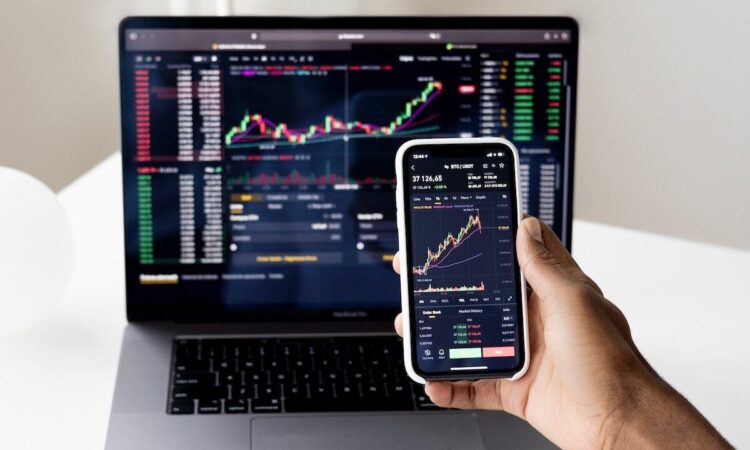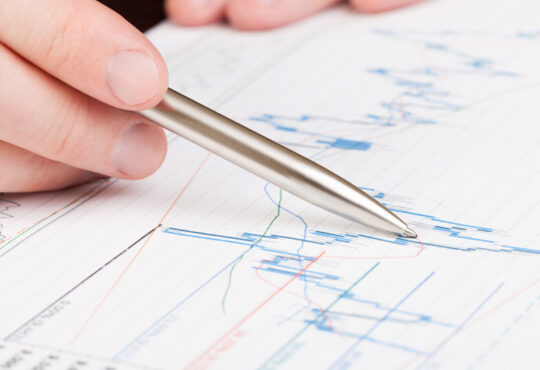
Table of Contents
Show more
Show less
Capital at risk. All investments carry a varying degree of risk and it’s important you understand the nature of the risks involved. The value of your investments can go down as well as up and you may get back less than you put in. Investments in a currency other than sterling are exposed to currency exchange risk. Currency exchange rates are constantly changing which may affect the value of the investment in sterling terms. You could lose money in sterling even if the stock price rises in the currency of origin. Stocks listed on overseas exchanges may be subject to additional dealing and exchange rate charges, and may have other tax implications, and may not provide the same, or any, regulatory protection as in the UK.
Investing in the stock market has the potential to offer greater returns than cash savings, helping you beat the corrosive impact of inflation on your cash.
However, investing also puts your money at risk. Share prices can go down as well as up, and it is possible to lose some or all of your money.
But if you are comfortable with the risks and want to trade shares, you’ll need to open a share trading account. Offered by a range of providers, including investment platforms and high street banks, these accounts allow you to buy and sell investments, and build your portfolio.
Today, the majority are opened and managed either online or via an app.
Below we take a look at how to open your account, fund it and buy your first shares.
Choosing your account
One of the most popular ways to get involved in investing is through a trading platform. There are a number of these in operation, so it is important to select the right one for your needs and preferences.
Here are a few factors to consider:
- Fee structure
Fees vary between platforms, but you can generally expect to pay an annual ‘platform fee’ – a fee providers charge for holding your investments – as well as dealing fees when you buy and sell.
Platform fees are usually charged as a percentage of your invested cash (around 0.25% to 0.45%), but you may be charged a flat monthly fee instead. This could be more cost-effective for higher value portfolios.You may also receive a certain number of free trades per month in exchange for a flat fee.
While some platforms offer commission-free trading, they may come with other costs such as inactivity or withdrawal fees – more on this below.
- Range of investments
Some providers offer a very wide array of investment options, while others provide a smaller, curated selection, or offer a suite of ready-made portfolios.Which option is right for you depends on the level of control you would like to exert over your investments, your level of knowledge, and how much time you want to dedicate to building and managing a portfolio.
What you’ll need
Before you can open a share dealing account, you’ll need a few basic personal details to hand along with your National Insurance number and bank account details.
Opening a new account
Once you have these details, navigate to your chosen platform by opening its website in your browser, or downloading the app.
Next, click or tap the ‘open an account’ button. You’ll be prompted to enter your details. You’ll need to choose a suitable password for the account, used whenever you log in.
At this stage, the platform may also ask for your bank details. This information allows you to fund the new share dealing account. No money will be taken from the linked bank account at this stage.
Next, choose an account type – such as a stocks and shares ISA, or share trading account (sometimes called a general investment or share dealing account).
If your provider uses a tiered subscription model, you may also be prompted to select a plan. Which option you pick will depend on your trading style, and how much you have to invest.
For instance, with a higher-fee tier you can expect to receive a number of free trades each month, which could save you money overall if you like to trade shares regularly.
Exactly how long it takes to open an account varies by provider, and whether you have the details you need to hand, but it could take as little as 10 minutes.
Funding your account
Before you can invest in shares, you’ll need to add cash to your account. Most platforms will prompt you to do this automatically when a new account is opened, and there’s usually a minimum investment amount.
Otherwise, you can navigate to the tab or button marked ‘add money’, ‘top up’ or similar. You will be prompted to enter the amount you want to pay in, and how you’d like to pay – for instance via debit card, or from your linked current account.
Generally speaking, bank transfers reach your account more quickly than debit card payments.
Some platforms also allow you to fund your account with a credit card. Since the transfer will count as a cash advance, your provider may charge a fee – typically between 3% and 5% of the amount transferred.
With a cash advance, interest payments kick in right away, and you’ll be charged interest on the advance each day until the balance is cleared.
Once you’ve selected a payment method, you’ll be prompted to enter your card or bank details and confirm the transaction. You can usually save these payment details to speed up the process next time.
When the transaction is complete, the money will appear in your investing account as a cash balance.
Most platforms allow you to add money through one-off payments, or through a monthly direct debit.
Some, such as Freetrade, interactive investor, Bestinvest and Fidelity, pay interest on uninvested cash balances.
Buying and selling shares
Once you have opened and funded your account, you can begin to purchase investments. Most platforms offer a variety of shares, along with bonds and investment funds.
The buying process varies between platforms, but will generally involve the following steps:
1. Select your investment
Open your chosen platform, and follow the prompts to log into your account
Navigate to the tab or button marked ‘invest,’ ‘buy,’ or similar
Browse the investment options on offer, or use the search facility to locate the company or fund you want. You can typically search by name, or ticker symbol (the three or four-letter code assigned to a company on the stock market).
2. View the investment information
Click or tap your chosen investment. The platform should display a current price, along with information such as its price history and a description of the company.
3. Choose how much to invest
Next, tap or click the ‘buy’ button. You’ll be prompted to enter the amount you want to invest. If your platform charges dealing fees, this should also be displayed. Some platforms allow you to buy fractional shares – in other words, a portion of one share. This can be a useful option when it comes to investing in high value companies with shares worth hundreds of pounds each.
4. Complete the transaction
When you’re ready to complete the transaction, look for a button marked ‘confirm’ or similar, and tap or click it to complete the transaction.
5. View your investments
Your share will be purchased using the cash balance in your account, and will shortly appear in your portfolio. You can view your shares and track their process any time in your app or online – there’s usually a button or link labelled ‘view your investments’ or similar.
Bear in mind that your trade may take time to complete. For instance, if you place an order through AJ Bell after 3pm, it won’t be processed until the following working day.
To sell your investments, first open your portfolio. Tap or click on the investment you’d like to sell, and select the ‘sell’ option. You’ll be prompted to enter the number of shares or units you would like to sell, and see an estimated sale value based on the latest available data.
This may not be the price you ultimately receive, since share prices can fluctuate quickly over the course of the day.
Once you’ve entered the number of shares you’d like to sell, you can confirm the transaction by tapping or clicking ‘confirm’.
Next, proceeds of the sale will be deposited into your cash balance. The process could take up to three or four working days.
Investing in international shares
Many investing platforms allow customers to buy and sell international shares as well as their UK counterparts.
To buy an international share, you can search for the company as usual.
You’ll be met with information about the firm, along with a share price listed in the local currency – such as dollars or Euros.
Some platforms convert the pounds Sterling held in your account to the local currency at time of purchase, while others allow you to hold cash in multiple currencies. If you plan to invest in international companies this could be a useful feature.
Interactive investor, for instance, allows users to hold up to nine currencies in their trading account – including US dollars, Euros, Swiss francs and Canadian dollars.
Whenever you convert currencies, you’ll be charged a foreign exchange fee.
AJ Bell, for instance, charges a foreign exchange fee of up to 0.75% of the value being converted, while Hargreaves Lansdown charges up to 1.00%.
Dealing fees may also be higher for buying international shares than UK-based shares.
US shares
If you want to purchase US shares, there may be some extra paperwork.
As a UK citizen, you’re entitled to a reduced rate of tax on any dividends or capital gains made through US investments – but to claim this rate, you’ll need to fill out what’s called a W-8BEN form.
Usually, foreign investors pay a tax rate of 30% on their returns when investing in US markets, but UK citizens can claim a reduced rate of 15%.
If your investment platform lists US shares, it will typically direct you to a W-8BEN form automatically when you purchase one for the first time.
To complete the form you’ll need to fill in some personal details, such as your name, address and National Insurance number.
The W-8BEN form remains valid for three years, and your investing platform should automatically prompt you when it’s about to expire.
Paying account fees
Most platforms calculate fees monthly, and automatically deduct them from your cash balance.
If you don’t have enough cash to cover the fee, your provider will either show a negative balance, or sell some of your investments to cover the fees.
Dealing fees – charged when you buy or sell shares – are typically charged at the point of trade.
Fee structure varies by platform, and there are a couple of other fees to watch out for:
Inactivity fee
Some providers charge an ‘inactivity fee’ if you don’t log into your account for a certain length of time – typically 12 months.
For this reason, it’s best to check in on your investments regularly.
Withdrawal fee
You may also be charged a fee for making cash withdrawals from your investment account. Providers that don’t charge dealing or platform fees may charge this fee instead.





